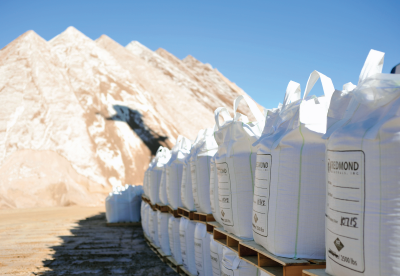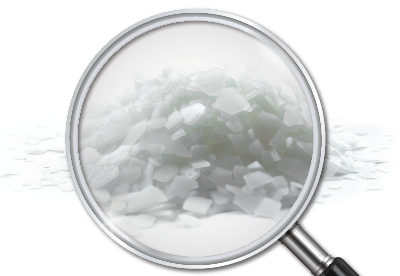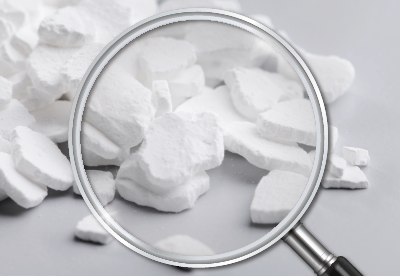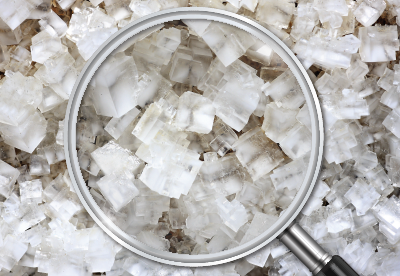Date December 15, 2021 | Brooke Loeffler
Chloride Spotlight: What is Potassium Chloride?
Chemical Structure
A potassium chloride molecule has 1 potassium atom (K) and 1 chlorine atom (Cl). This salt molecule attaches easily and readily with water molecules. The hygroscopic ability to attract and hold water makes potassium chloride a versatile substance.

Potassium Chloride Uses
Medical / Health
Potassium chloride is an essential electrolyte for many biological systems in the body. It helps power the electrical impulses behind your beating heart, contracting muscles, and working nervous system. Potassium chloride is a common treatment for hypertension and regulating heartbeat and blood flow.
Food / Beverages
Like other salts, potassium chloride is a common ingredient for flavoring and seasoning foods. It is typically used in smaller quantities than other chloride salts, as it can cause bitterness if used in excess. Potassium chloride is also used to preserve foods. Its ability to attract and hold onto water molecules is useful for removing the moisture needed for pathogens to grow.
Agriculture
Potassium is an essential macro nutrient for plants because they need it in order to photosynthesize. For this reason, potassium chloride is a common ingredient in agricultural fertilizers. Because it is also a dietary electrolyte, it is included in many livestock mineral supplements.
Industrial/Manufacturing
Potassium chloride is used in many industrial applications including glass manufacturing (KCl increases the clarity of glass), oil and gas drilling, water softening, welding/metallurgy (as a purifying ingredient), and more.
Deicing / Freeze Point Depression
One of the most common uses for potassium chloride is as a deicing agent. All chloride salts work by interfering with water’s ability to freeze, which naturally lowers its freezing point. With no interference, water will freeze at 32° F / 0° C. Potassium chloride lowers that point to about 12° F / -11° C. It is considered a “gentler” deicing ingredient and is less harsh on metals, concrete, and plants.

Potassium can attract and bind 1.7 water molecules at once and prevent them from rebonding with each other. This ion hydration process interferes with the water molecules’ ability to refreeze. Potassium chloride also creates an endothermic reaction, drawing heat in from its environment to aid in the ice melting process.
- Click here to learn more about endothermic and exothermic reactions.
Ice Slicer® And Potassium Chloride
Ice Slicer® is a proud complex chloride™ deicer product. Harvested directly from a Jurassic Era sea mineral deposit, Ice Slicer® naturally contains a homogenous blend of all 4 chloride salts (sodium, magnesium, potassium, calcium) and 60+ trace minerals. These complex chlorides work together using a phenomenon called chemical synergism. As each chloride salt gets to work, they amplify each other’s performance at all temperatures and in all weather conditions.

The potassium chloride in Ice Slicer® teams up with its other chloride salts to efficiently melt ice and snow in a wide range of storm conditions. Did you know, when applied at the recommended rates, Ice Slicer® nourishes soil and actually improves plant growth along the roadside! Also, the extra minerals in Ice Slicer® naturally buffer the effects of chlorides on concrete and metal infrastructure as well as the environment.
Worried about heavy handed applications of chlorides on our infrastructure and environment? Responsible deicer usage is a goal we can and should all get behind. Try Ice Slicer’s® nature balanced formula and enjoy high performance and environmental peace of mind.
© 2024 Redmond Minerals Inc.






